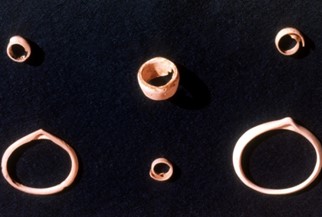There are some 517 aquare miles in the park. The Land for the Monument was donated by the Arizona state legislature to the Federal Goverment during the Prohibition. In 1937 the land was opened as a national monument.
North entrance is a few miles south of Why, AZ.
In the South it would be Lukeville. Where the crossing point to Mexcio is.
Many archaeological sites can be found within Organ Pipe Cactus. In 1937 it was offically opened as a national monument.
In what is now Organ Pipe Cactus National Monument, archaeological evidence places human beings in this area approximately 1,600 years ago. These people left behind projectile points, seashells, pottery, rock art and the paths they followed on foot are still carved onto the desert floor. Over the millennia, people moved through here while following impressed trade routes, hunting and gathering, and settling for short periods of time. Once agriculture was introduced in the southwest, people began to establish more permanent settlements and eventually larger villages.
Many archaeological sites can be found within Organ Pipe Cactus. The Hohokam people's culture existed in this area from the first years Common Era (C.E.). through C.E. 1450. Considered the greatest of the ancient southwest cultures, the Hohokam achieved remarkable successes during their time, and are today most noted for the creation of extensive irrigation canals fed by the Salt and Gila rivers. Several miles of irrigation canals can still be seen on the desert floor at Organ Pipe Cactus. These waterways supported fields of corn, beans, squash, tobacco, and cotton

NPS Photo
Nearly 150 years after the first Spaniards confirmed the lack of large and wealthy civilizations,missionaries combed the area to collect the many valued souls of the people who lived here. With the spread of Christianity, local American Indian cultures changed to use the European methods of farming and ranching taught by the missionaries. Not long
The early national monument faced many challenges, especially with local miners and ranching families. Mineral mining began in the late 19th century, and was allowed to continue up to 1976. Hiking in the monument you can easily see the mining history in old prospecting holes, tailings, and buildings.
Modern ranching in the monument began at the beginning of the 20th century, and also continued through the 1970's.The effects of overgrazing are still seen today. You can visit old ranching sites at Alamo Canyon, Bates Well, and otherwells scattered across the monument.
In 1976 The United Nations designated Organ Pipe Cactus National Monument as an International Biosphere Reserve, reconfirming its status as an outstanding example of the Sonoran Desert. Then in 1977, Congress declares 95% of Organ Pipe Cactus National Monument as a Wilderness area.
Quitobaquito has had many colorful residents. Andrew Dorsey arrived in the early 1860's, opened a store, dug the pond deeper and built an earthen dam to create a bigger water source. He also dug irrigation ditches to water his pomegranate and fig trees. Dorsey lived in the area until the 1890's. In 1887, a former Texas Ranger named Jefferson Davis Milton was hired to establish a United States Custom and Immigration station at Quitobaquito.
Milton went on to mine for gold and silver in the area and established the Milton Mine that you can still visit in the monument today. Around 1903, local rancher Thomas Childs Jr. arrived and rebuilt Dorsey's dam and irrigation ditches. Among other crops, he started to grow watermelons.
On April 13, 1937, President Franklin Roosevelt signed the proclamation creating Organ Pipe cactus National Monument. Around 1947, the pond at Quitobaquito was approximately 2 feet deep, and covered an area up to 0.5 acres. Also over 4,000 feet of irrigation ditches existed, providing water to at least 8 fig trees and 22 pomegranate trees.
Modern ranching in the monument began at the beginning of the 20th century, and also continued through the 1970's.The effects of overgrazing are still seen today. You can visit old ranching sites at Alamo Canyon, Bates Well, and otherwells scattered across the monument.
In 1976 The United Nations designated Organ Pipe Cactus National Monument as an International Biosphere Reserve, reconfirming its status as an outstanding example of the Sonoran Desert. Then in 1977, Congress declares 95% of Organ Pipe Cactus National Monument as a Wilderness area.
Quitobaquito has had many colorful residents. Andrew Dorsey arrived in the early 1860's, opened a store, dug the pond deeper and built an earthen dam to create a bigger water source. He also dug irrigation ditches to water his pomegranate and fig trees. Dorsey lived in the area until the 1890's. In 1887, a former Texas Ranger named Jefferson Davis Milton was hired to establish a United States Custom and Immigration station at Quitobaquito.
Milton went on to mine for gold and silver in the area and established the Milton Mine that you can still visit in the monument today. Around 1903, local rancher Thomas Childs Jr. arrived and rebuilt Dorsey's dam and irrigation ditches. Among other crops, he started to grow watermelons.
On April 13, 1937, President Franklin Roosevelt signed the proclamation creating Organ Pipe cactus National Monument. Around 1947, the pond at Quitobaquito was approximately 2 feet deep, and covered an area up to 0.5 acres. Also over 4,000 feet of irrigation ditches existed, providing water to at least 8 fig trees and 22 pomegranate trees.









No comments:
Post a Comment